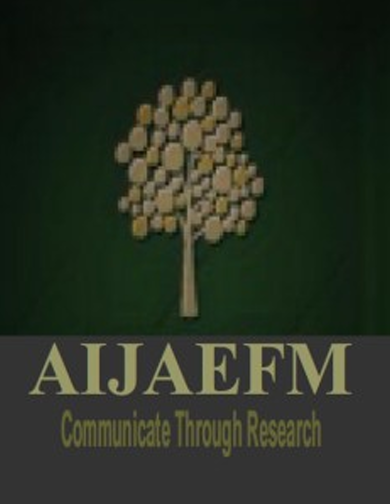
About the Journal
ADSU International Journal of Applied Economics, Finance and Management
Overview
The ADSU International Journal of Applied Economics, Finance and Management is a premier scholarly publication of the Department of Economics, Adamawa State University, Mubi, that disseminates advanced research and knowledge in the fields of applied economics, finance, and management. The journal caters to a global audience of academicians, researchers, and professionals, aiming to bridge the gap between theory and practice in these interrelated disciplines in order to facilitate economic development.
History
The journal was initially established in 2016 under the title ADSU Journal of Economics and Interrelated Disciplines. It was founded with the mission to explore and address the diverse aspects of economics and its related fields. Recognizing the evolving scope and the interdisciplinary nature of modern economic studies, the journal rebranded to ADSU Journal of Applied Economics, Finance and Management. This change reflected a more focused commitment to the practical applications of economic theories, financial management practices, and managerial strategies.
In its continuous evolution and pursuit of academic excellence, the journal has now attained significant international visibility and prestige, leading to its current title, ADSU International Journal of Applied Economics, Finance and Management. This rebranding marks its established status in the global academic community and its commitment to fostering international collaboration and dissemination of high-impact research.
Scope and Aims
The ADSU International Journal of Applied Economics, Finance and Management aims to publish original, high-quality research articles, review papers, and case studies. The journal welcomes contributions that offer innovative insights, empirical findings, and theoretical advancements in areas including, but not limited to:
Applied Economics: consumer behaviour, production theory, market structures, game theory, labour markets, welfare economics, economic growth, business cycles, inflation, unemployment, fiscal policy, international trade and finance, time-series, panel data analysis forecasting, poverty, inequality, human capital, microfinance, natural resource management, environmental policy, climate change economics, health economics, healthcare systems, health policy, cost-effectiveness analysis, Urban and regional economics, urbanization, regional development, housing, transportation economics, agricultural economics, agricultural policy, rural development, food security, food economics, food policy, supply chains, and nutrition economics. Tourism economics, economic impact of tourism, demand and supply of tourism, tourism policy, sustainable tourism, sport economics, economic impact of sports, sports finance, marketing, and policy. Industrial organization, market structure, competition, antitrust policy, and innovation. Labour economics, labour supply and demand, wage determination, employment, and labour mobility. Public economics, taxation, government spending, public goods, social insurance, and income distribution. International economics focusing on trade theory, policy, exchange rates, and globalization. Political economy covering governance, political behaviour, and institutional economics. Education economics covering the economics of education, policy, and human capital. . Law and economics analysing property rights and contract theory. History of economic thought exploring classical and modern economic theories. Energy economics examining energy markets and policy. Cultural economics covering the economics of arts, culture, and creative industries.
Applied finance: Corporate finance including financial strategies, capital structure, dividend policy, and mergers and acquisitions. Investment analysis covering portfolio management, asset valuation, market analysis, and investment strategies. Financial markets research focusing on the functioning, efficiency, and regulation of stock, bond, and derivative markets. Risk management involving the identification, assessment, and mitigation of financial risks. Financial technology (FinTech) analysing technological innovations in finance, such as blockchain, cryptocurrencies, and digital banking. International finance examining exchange rates, global financial markets, international investment strategies, and the impact of global economic events. Behavioural finance exploring psychological factors influencing financial decision-making and market behaviour. Public finance involving taxation, government spending, public debt, and fiscal policy. Real estate finance covering property valuation, real estate investment, mortgage markets, and property management. Insurance and actuarial science focusing on risk assessment, insurance products, and financial planning for future uncertainties. Banking and financial institutions focusing on the role, regulation, and performance of banks and other financial entities. Personal finance involving budgeting, saving, investing, retirement planning, and wealth management. Corporate governance examining the systems, principles, and processes by which companies are directed and controlled. Financial ethics and regulation exploring ethical issues in finance and the impact of regulatory frameworks on financial practices.
Applied management: Strategic management involving competitive strategy, strategic planning, and long-term direction for organizations. Organizational behaviour regarding the behaviour of individuals and groups within organizations, including motivation, leadership, and organizational culture. Human resource management focusing on recruitment, training, performance management, and the strategic role of human resources. Operations management covering the efficient production and delivery of goods and services, supply chain management, and process optimization. International business examineing global business strategies, cross-cultural management, and the challenges of operating in diverse international markets. Entrepreneurship and innovation focusing on the creation and growth of new ventures, innovation management, and the entrepreneurial ecosystem. Corporate governance investigating the systems, principles, and processes by which companies are directed and controlled. Marketing management including market research, consumer behaviour, branding, and digital marketing strategies. Project management involving the planning, execution, and control of projects, including methodologies and tools for successful project delivery. Information systems management focusing on the use of information technology to improve business processes and decision-making. Quality management covering quality control, quality assurance, and continuous improvement processes. Change management involving strategies and approaches for managing organizational change and transformation. Financial management including budgeting, financial planning, investment analysis, and financial control. Knowledge management focusing on the creation, sharing, and utilization of knowledge within organizations. Innovation management exploring the processes and practices that foster innovation and creativity within organizations.
Editorial Standards
The journal upholds rigorous peer-review standards to ensure the publication of high-quality and impactful research. Manuscripts are evaluated based on originality, relevance, methodological rigor, and clarity of presentation. The editorial board comprises esteemed scholars and practitioners from around the world, bringing diverse perspectives and expertise to the review process.
Audience
The journal targets a broad audience including academics, researchers, practitioners, policy-makers, and students who are interested in the practical applications of economic theories, financial strategies, and management practices. It serves as a valuable resource for those seeking to understand the complexities of the global economy and to apply this knowledge in various professional contexts.
Publication Frequency
The ADSU International Journal of Applied Economics, Finance and Management is published biannually, ensuring a regular flow of high-quality research to its readership.
Access and Distribution
The journal is committed to broad dissemination of its content and supports open access to ensure that research findings are accessible to a wider audience without financial or technical barriers. This approach enhances the journal’s reach and impact across the global academic and professional communities.





